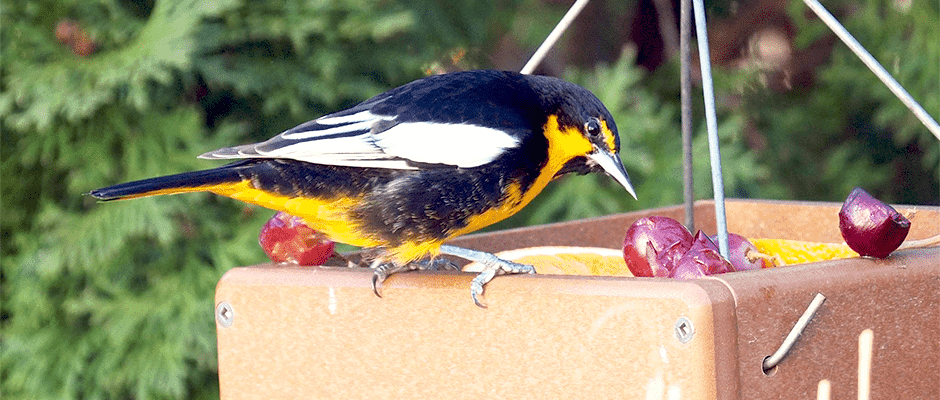Share this article
Can a ‘twitch’ be a pitch for wildlife?
The black-backed oriole typically subsists on monarch butterflies in the forests of central Mexico, but when one appeared in suburban Pennsylvania last January, thousands of birders flocked to get a glimpse of one of the species’ first appearances in the United States.
The bird’s arrival was interesting, but the birders’ arrival was important, too. A single unusual bird sighting, a group of researchers realized, could contribute hundreds of thousands of dollars to the economy and help put a dollar value on wildlife.
“If you can put a dollar amount to a bird and value that ecosystem biodiversity, that’s something policymakers can understand,” said Corey Callaghan, lead author on the paper published in the journal, Human Dimensions of Wildlife. “Policymakers don’t necessarily understand why they should care about bird x in location z, but if they know that’s a potential revenue source, then it’s something.”
A PhD candidate at the University of New South Wales in Australia, Callaghan noted the black-backed oriole’s (Icterus abeillei) arrival at a backyard feeder in Berks County, Pennsylvania in late January 2017 on the American Birding Association’s Rare Bird Alert Facebook group. In a rare-bird chase, known as a “twitch,” over 1,800 birders from across North America journeyed to see the vagrant bird — possibly the first record of a wild individual of this species in the United States, according to the American Birding Association.
That February, after Callaghan learned that the homeowners were keeping a guestbook during the 67 days the black-backed oriole inhabited their property, he used the log to estimate the distances traveled by the observers. He also asked visitors to estimate their spending on travel, accommodation and food throughout their trips. The results revealed that all together, people spent upwards of $220,000 in pursuit of the bird.
“It’s tourism that translates to conservation awareness and funding,” Callaghan said.
During the bird’s stay, he said, visiting birders donated $2,000 to The Nature Conservancy, which indicates the possibility of raising money for conservation through donations at these vagrant bird sightings.
Vagrant animals might end up in a national park, wildlife refuge or yard outside their range if they migrate in the direction opposite to the way they’re supposed to. They can stick around for months at a time and attract birders several times a year, so they’re “a unique case highlighting the diverse values of biodiversity,” Callaghan said.
He plans to compile a database of recent unusual bird sightings and obtain better estimates on the extent of these occurrences and the number of visitors who visit the birds. Callaghan also intends to conduct similar research on spending around Aleutian terns (Onychoprion aleuticus) that were recently documented in Australia for the first time.
Header Image: The second vagrant black-backed oriole recorded in the United States perches on a backyard feeder in suburban Pennsylvania. ©Susan Schmoyer








